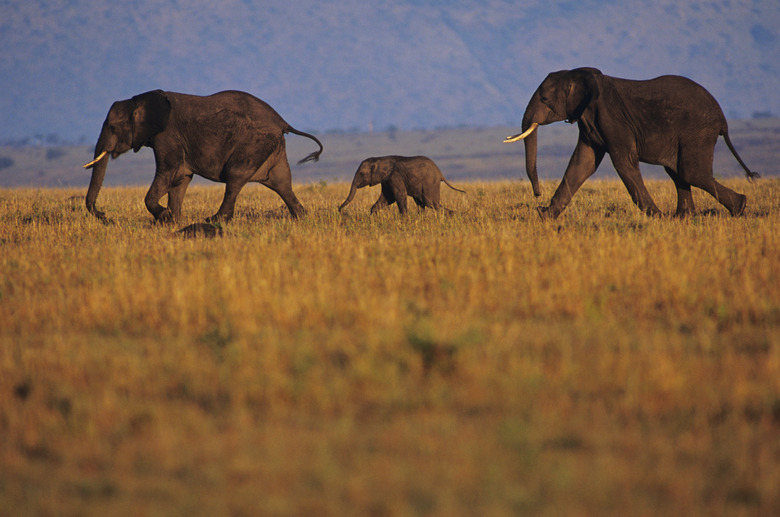What Are The Habitats Of The Six Kingdoms?
Before the invention of microscopes, the world was thought to only have two kingdoms, plants and animals. Thanks to advancements in technology and the invention of the microscope, the system of classifications now consists of six kingdoms: protista, animilia, archaebacteria, plantae, eubacteria and fungi . The organisms on earth all reside in different habitats from very acidic environments to terrestrial environments.
Protista Habitat
Protista Habitat
All microscopic organisms not belonging to one of the other five kingdoms is part of the protista family. This includes euglena, plasmodium and ameoba. These organisms are aquatic, and are found in both fresh water and salt water including oceans, lakes, ponds, creeks and any other body of water.
Animalia Habitat
Animalia Habitat
The animalia kingdom is the largest kingdom, consisting of over one million species. Sponge, plankton, insects, arachnids, humans and whales among other animals are creatures of this kingdom and reside virtually everywhere. This stands true for the North and South Pole, the oceans, lakes and rocky terrain all over the world.
Archaebacteria Habitat
Archaebacteria Habitat
Archaebacteria were first discovered in Yellowstone National Park's hot springs. The kingdom consists of halophiles and methanogens among other organisms. Thriving in areas with no oxygen, in high salt concentrations, high acidity areas and hot springs, the habitat of the archaebacteria is extreme to say the least. It is theorized that because of the extreme conditions in which they thrive, archaebacteria may be the oldest organism to ever colonize on planet earth.
Plantae Habitat
Plantae Habitat
Most of us are familiar with the plantae kingdom which consists of trees, bushes, vines, flowering plants, ferns and moss among other living organisms. Many plants are aqueous, meaning that they survive and thrive in water whether it be fresh or salt water. The vast majority of plants actually reside on earth's land area.
Eubacteria Habitat
Eubacteria Habitat
Eubacteria have been on earth almost as long as archaebacteria. When washing your hands, you're usually trying to get rid of this type of bacteria, what we often call "germs." While most eubacteria is beneficial, some like Streptococci and Esherischia coli (E. coli) are harmful to human health. Eubacteria are found everywhere on the planet. According to scientists at Imperial College London, most of the cells in the human body are bacterial.
Fungi Habitat
Fungi Habitat
Mushrooms, mold, yeasts and mildew are all forms of fungi. Because fungi feed on dead organic matter, the best place to find them are woods and meadows, although fungi are found almost everywhere in the world including oceans, lakes, earth's terrestrial surface and even microscopic crevices on electronic equipment. Some types of fungi grow on both human and animal feces.
References
- Rhode Island College: The Six Kingdoms
- University of California Museum of Paleontology: Introduction to the Fungi
- Terrebonne Parish History and Genealogy: Biology II Notes – The Six Kingdoms
- National High Magnetic Field Laboratory – Molecular Expressions: Plant Cell Structure
- Country Side Info: Fungi and their Habitats
Cite This Article
MLA
Lamberto, Emilia. "What Are The Habitats Of The Six Kingdoms?" sciencing.com, https://www.sciencing.com/habitats-six-kingdoms-7552564/. 13 March 2018.
APA
Lamberto, Emilia. (2018, March 13). What Are The Habitats Of The Six Kingdoms?. sciencing.com. Retrieved from https://www.sciencing.com/habitats-six-kingdoms-7552564/
Chicago
Lamberto, Emilia. What Are The Habitats Of The Six Kingdoms? last modified August 30, 2022. https://www.sciencing.com/habitats-six-kingdoms-7552564/
